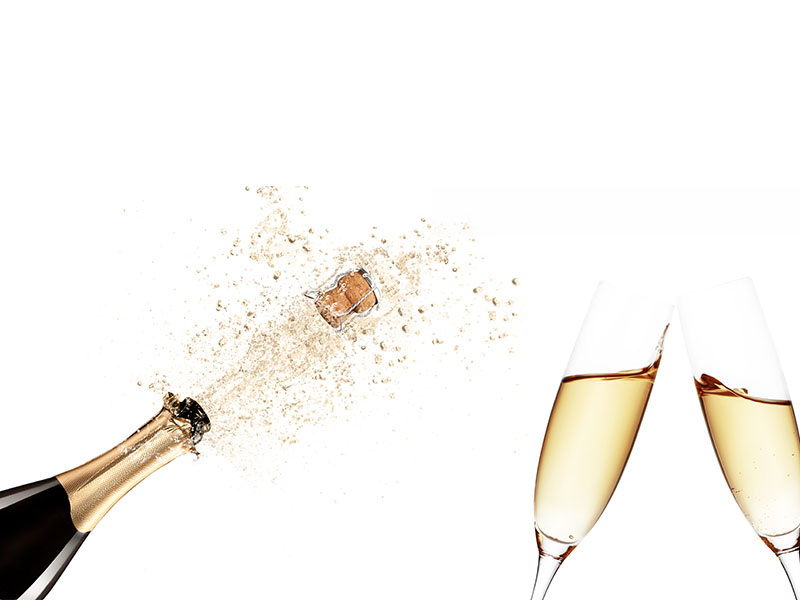“Come quickly, I am tasting the stars!” — Dom Pérignon

Champagne dates back centuries to the days when Benedictine monk Dom Pérignon was the cellar master at the Abbey of Hautvillers, assigned to oversee wine production. One of his duties was to try to prevent wine from becoming bubbly, which at the time, was thought to ruin the wine. He and his fellow monks altered the grapes used in the wine production and eliminated skins to see if that made a difference.
Due to the temperatures in France at the time, it was too cold to leave the wine in barrels, so it was often bottled before full fermentation could be completed. Pérignon and the monks failed at preventing the effervescent wine; however, when he tried the “ruined” wine, he found the taste to be delightful and even a bit celestial. His fellow monks shared his opinion and the abbey’s winemaking method spread throughout the land and Champagne production increased.
Back in those days, bottles were not specifically made to withstand the atmospheres of pressure trapped within, so bottles often exploded in the French wine cellars and it is rumored that nearly 20 percent was lost due to explosion. The exploding bottles were called “le vin du diable” or “the devil’s wine.”
The sparkling wine’s popularity spread, and English scientist Christopher Merret discovered that sugar played an important role in creating Champagne’s effervescence. He found that too much sugar caused the bottles to explode, and too little sugar meant that the resulting wine wasn’t quite effervescent enough. The cost of exploding bottles and the ongoing research into creating the perfect sparkling wine were expensive, and the cost of Champagne soared.
Due to the high cost and uniqueness of the wine, Champagne became the favorite drink of the royals in Europe. Champagne was served for royal festivities at the Palais Royal in Paris, where entertainment was always important, as the guests loved seeing the cork jump out of the bottle. In the 18th century, Madame de Pompadour ordered Champagne by the gallon for her extravagant parties. Rumors were that during one of her parties, in 1732, that over 1,800 bottles were consumed in a single evening.
The 18th venture rise of the big houses like Moët et Chandon, Louis Roederer, Veuve Clicquot, and Tattinger helped seal Champagne’s reputation as a wine of status and prestige. The wines were taken to various royal courts for their consideration, and marketing began as artists like Toulouse-Lautrec, Cézanne, and Manet were hired to paint images of champagne bottles and people enjoying Champagne.
Over time, Champagne has become the beverage synonymous with celebrating royal, political, national, fashionable, and sporting events, as well as celebrating life’s best moments. Whether it is christening a brand-new ship, christening a new addition to the family, the first toast as man and wife, or the toast as the clock strikes midnight on New Year’s Eve, Champagne is there.
“The thing about champagne, you say, unfoiling the cork, and unwinding the wire restraint, is that is the ultimate associative object. Every time you open a bottle of Champagne, it's a celebration, so there's no better way of starting a celebration than opening a bottle of Champagne. Every time you sip it, you're sipping from all those other celebrations. The joy accumulates over time.” — David Levithan, “The Lover's Dictionary”

Comments
Be the first to comment...